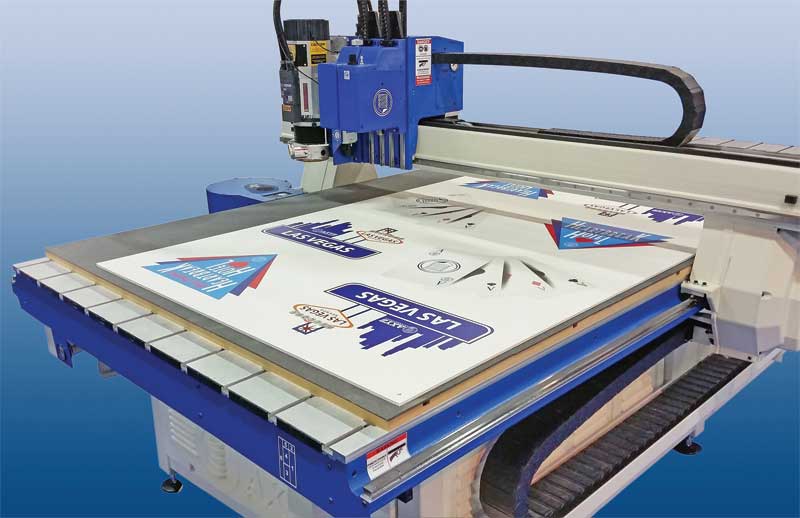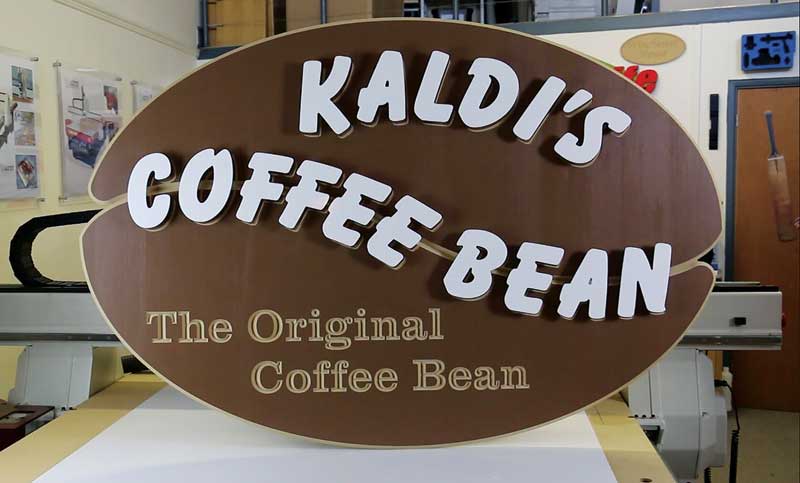
Photos courtesy Axyz International
By Todd Hamilton
In the sign equipment market, there are vendors and there are system partners. The role of the former is limited to simply supplying equipment and parts, nothing more. The role of the latter, on the other hand, is to work with sign businesses for the greater good of the industry. Ideally, such a relationship is what every sign shop should require of each of their suppliers. This is particularly the case with regard to manufacturers of computer numerical control (CNC) routers, which have become increasingly common in today’s shops.
The sign business has evolved to the point where traditional supplier relationships are not merely insufficient, but can even be detrimental to a sign shop’s operations and profitability. Not long ago, most sign shops expected their equipment vendors to provide (a) products and then (b) the necessary technical support to maintain those products. That expectation, however, was not always met. Even now, sign shops that purchase so-called ‘off-the-shelf’ CNC routers often end up having to rely on third-party support for maintenance and repairs. The potential for economic loss is a great threat if such support cannot be provided immediately when a router malfunctions or breaks down.
For vendors to be considered full business partners, they need to transcend their traditional understanding of customer-oriented service and develop more comprehensive knowledge of their clients’ goals and processes, while still able to deliver technical support as needed. Well before being ‘on call’ for problems that may arise, they should also have a seat at the table with signmakers for tactical and strategic decision-making.
How relationships change with technology
As mentioned, the new roles of sign equipment suppliers can be equated with the broader evolution of the sign industry. Not many years ago, the industry was heavily dominated by backlit electric signs, which required much laborious work to create, mostly by hand. The only role for technology at the time was the use of an overhead projector to shine an image onto a wall to serve as a template for the building of the sign. Letters were cut either by the signmaker or by an outsourced third party. The process was time-consuming and costly, especially for smaller sign shops with five employees or less.
Advanced technology then came along in the form of CNC routers. The trailblazers for this equipment’s development were computer-aided manufacturing (CAM) software in general and toolpath software in particular, which could control cutting tools with a level of precision that old-fashioned signmaking by hand, no matter how proficient, was unlikely to match.

The sign industry has benefited from the precision of computer numerical control (CNC) routing.
As CNC technology continued to advance, manufacturers offered multiple spindles, automatic tool changes and drill banks. As a result, router operators in small sign shops began to enjoy the luxury of customization, a benefit that previously would have been available only to much larger shops.
Another key development in the sign industry, which may have had the greatest impact on the adoption of CNC routing, was the transition from traditional signmaking to digital wide-format inkjet printing. Today’s sign shops tend to digitally print point-of-purchase (POP) graphics, for example, onto specialized substrates before CNC routing them into custom shapes.
This combination of technologies continues to grow among smaller sign shops, which have identified an opportunity to attain higher profits by using a digital flatbed printer’s software to design shapes for a router to cut. Even a small shop can enjoy substantial reductions of the time and labour needed to complete a project to specifications and meet its customers’ deadlines.
Empowered by sophisticated digital printing and cutting technologies to take on larger competitors in terms of their production capabilities, many of today’s small signmaking businesses aspire to serve as one-stop shops for their customers. And there is no reason they cannot achieve this aspiration, provided they receive helpful guidance—which is where the changing nature of their relationships with vendors and suppliers comes into play.
With the current level of competition, signmakers can no longer be content buying from vendors whose products are adequate but whose training and technical support are limited or non-existent. There is simply too much at stake, as CNC routers and other new systems place a greater onus upon each sign shop to create thorough business plans for their use.
Hence the need for a collaborative operational approach with a strategic business partner to achieve a successful return on investment (ROI). In this sense, evolving technologies have led to a corresponding change in the role of suppliers, as it is essential for signmakers to consider both their current and future needs, well before the purchase of a machine and through its useful life, which in many cases will exceed 15 years.





